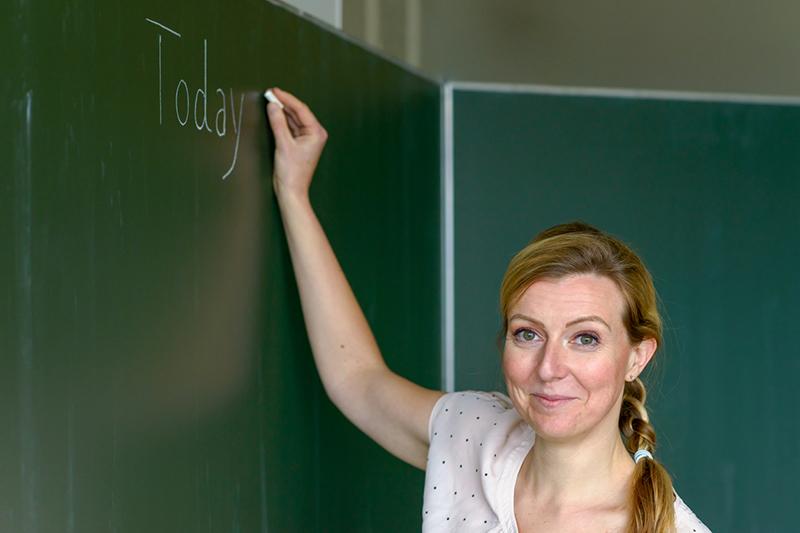As a former K-12 special education teacher, I know that sometimes, to improve student learning, we must first change our own behaviour as instructors. This is true at the post-secondary level as well. It has been estimated that one in five individuals enrolled in undergraduate college classes in the US has a disability, with the highest percentage having attention deficit disorder (ADD) or attention deficit hyperactivity disorder (ADHD). This number could be even higher given that students must self-report disabilities to their university to receive accommodations such as recorded lectures, shared notes and extended time on exams.
Many individuals with ADD and ADHD struggle in college given the nature of the disorder. Generally, they can have lower grades, more trouble concentrating in class, struggle to manage their time and use basic study skills.
- How to make your university more neurodiverse friendly
- With the right support, students with ADHD can thrive in digital learning environments
- 10 ways universities can reject ableism
However, instructors can implement strategies in their courses to support students with ADD and ADHD. Below are five simple changes instructors can make to their class.
1. Share the agenda for the class
Anxiety is common among people with ADD and ADHD, so if students know what to expect for the class, it relieves some of their stress.
Make clear what will happen during the class in a place that is easily visible. Typically, write the agenda in bullet points on the board, but you could also project it or give students a paper copy. Highlight all the main activities of the class that day: lecture time, group work and a writing activity, for example.
2. Increase student engagement and participation
A professor once told me that the person doing the talking is the person doing the learning. Think about your classes: who does most of the talking? If students are not actively engaged in an activity, it gives time for their minds to wander, which is a main characteristic of ADD and ADHD.
Look to increase your students’ opportunities to respond – ask more frequent comprehension and opinion questions. Instead of a full class lecture, try a jigsaw activity and have students read a text, then teach their peers about that content.
Another quick strategy is using “turn and talk” activities , where students discuss a question with a neighbour, then share with the whole class. In a recent class, my students did a sorting activity of special education laws that I developed, then created their own sort using transition and work-related legislation.
3. Give students options
This is a classic special-education strategy to give students a sense of autonomy and control. In the university setting, this could mean giving them multiple choices for an assignment. For example, after you finish the specific content, instead of having students take a test or write a paper, give them rein to be creative. Perhaps students use the knowledge gained to develop a brochure or record themselves giving an oral presentation. They could film a commercial or write a script for a play.
Given any of these options, students would still need to include the required content. This allows students to choose something they will enjoy, which increases their motivation and plays to their strengths.
4. Communicate your expectations clearly
Students with ADHD can sometimes get lost in the details or focus on aspects of a course that are not critical to their success. Information presented in lectures and assignment should be clear and linked to course goals. Focus on purpose, participation, product and content when explaining the task. The purpose should communicate the relevance of the assignment to the course. Participation lets the students know if this is a group or independent project. The product specifies what they can turn in. You can give students a choice in the look of their final product. Lastly, outline the content that is required in the assignment.
5. Build trust and ease with your students
In my education classes for future schoolteachers, I identify building relationships as the most important thing a teacher can do within their classroom. I think this is true for higher education courses as well. When you get to know your students, they become more comfortable and are willing to participate and engage more in class, while striving to be successful.
Building relationships also means students might be comfortable sharing things about their life with you. Some students do not self-identify as having a disability with the institution but might disclose that information to their instructor. Students might also be more inclined to share struggles they are experiencing, whether they relate to your class or not.
Try something simple: pose a question to the whole class to get to know them better. When taking attendance, each student can answer. I recently asked my students what fictional television or movie character they would like to be friends with. It starts the class on an engaging note, connections can be made based on responses, and you get a little piece of information about each student.
It seems more students are dealing with big life experiences while in college, whether that is getting married, grieving a death in the family, working long hours to pay for college or managing a disability. Being aware of this is truly the first step in changing our attitudes as educators. The next step is changing our behaviours by implementing these five simple strategies. It will create a better classroom experience for the many students who struggle with ADD and ADHD.
Sarah Sehlinger is assistant professor of special education at Indiana University Southeast.
If you would like advice and insight from academics and university staff delivered direct to your inbox each week, sign up for the Campus newsletter.




comment